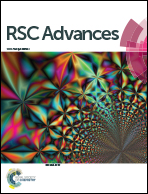The influence of synthesis parameters on the gas selectivity and permeability of carbon membranes: empirical modeling and process optimization using surface methodology
Abstract
One of the common polyimides, P84 HT (BTDA-TDI/MDI), was used to synthesize gas separating carbon molecular sieve (CMS) membranes and study their gas transport properties. This study explores the role of key variables such as blend composition and the pyrolysis conditions in synthesizing CMS membranes as well as the operating temperature and pressure on gas transport performance through modeling and optimization methods. An experimental design conducted through the implementation of D-optimal design took into account four main parameters to optimize gas permeability and ideal gas pair selectivity. The highest selectivity can be obtained from precursors carbonized at a higher temperature, but optimal values for both the selectivity and permeability were attained for those CMS membranes pyrolyzed at 760.2 °C. The optimum operating conditions for this membrane are 4.5 bar and 25 °C. Under these conditions, the selectivities of N2/CH4, CO2/CH4, O2/N2 and N2/CO2, were 3.65, 155.7, 28.4 and 49.6, respectively.


 Please wait while we load your content...
Please wait while we load your content...